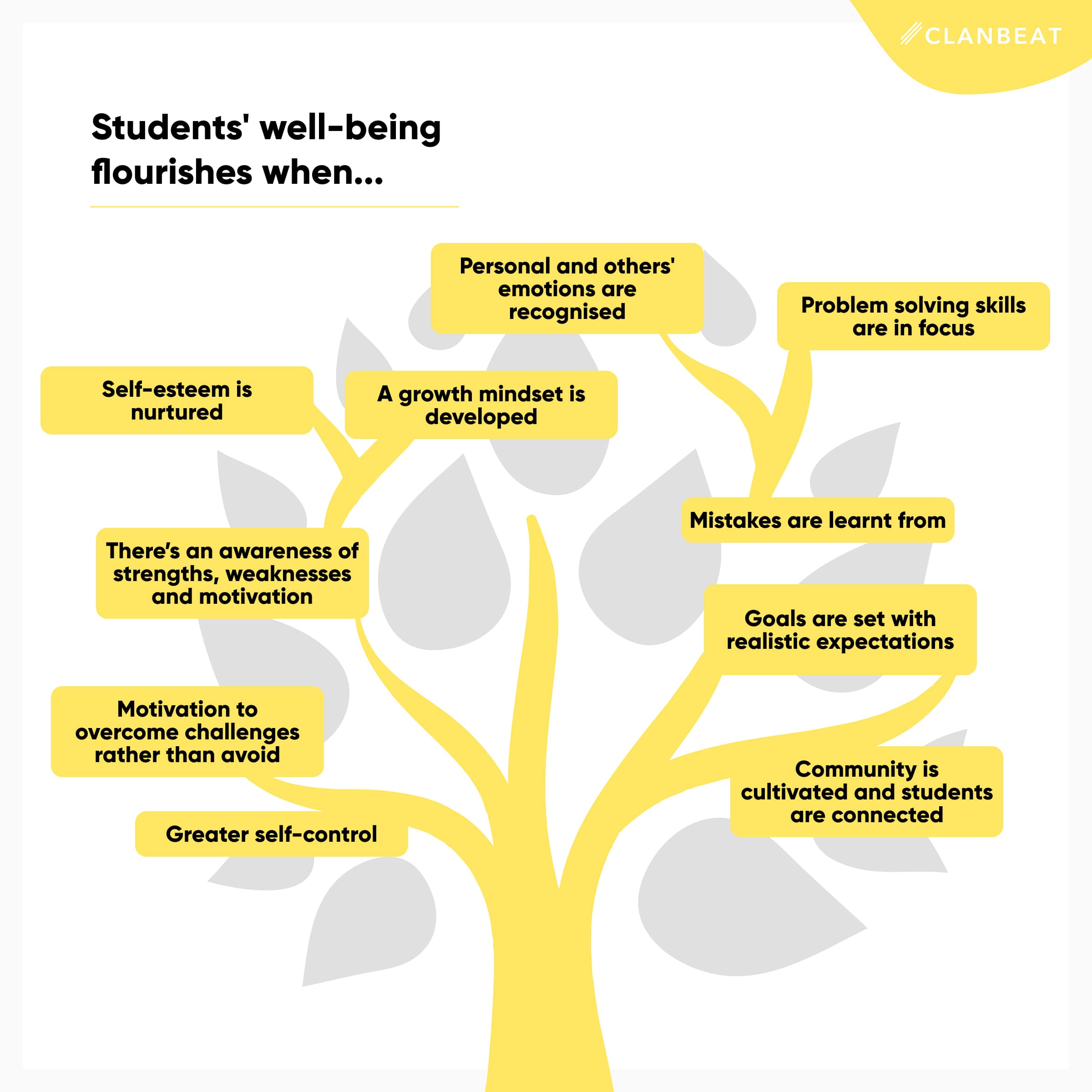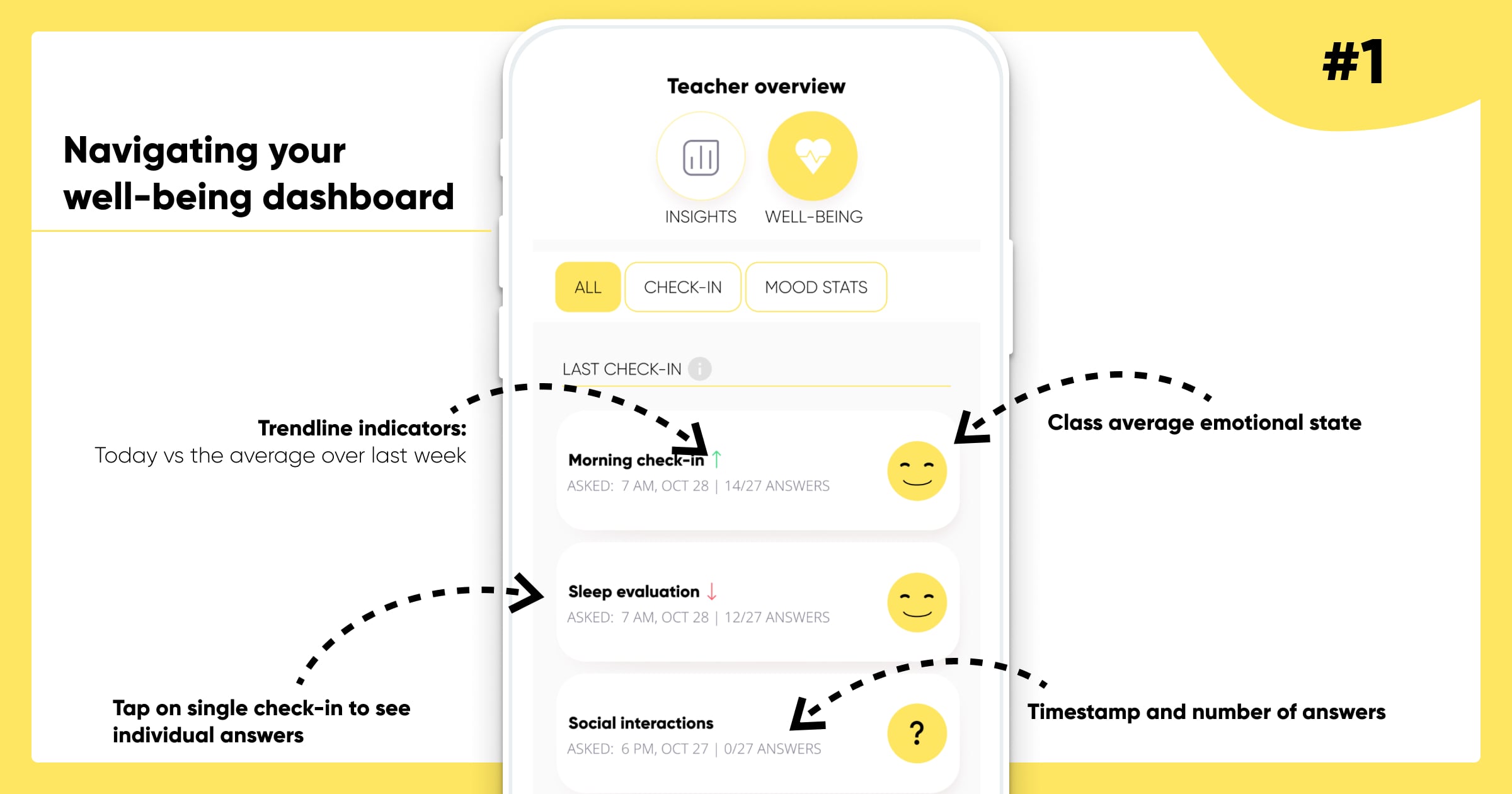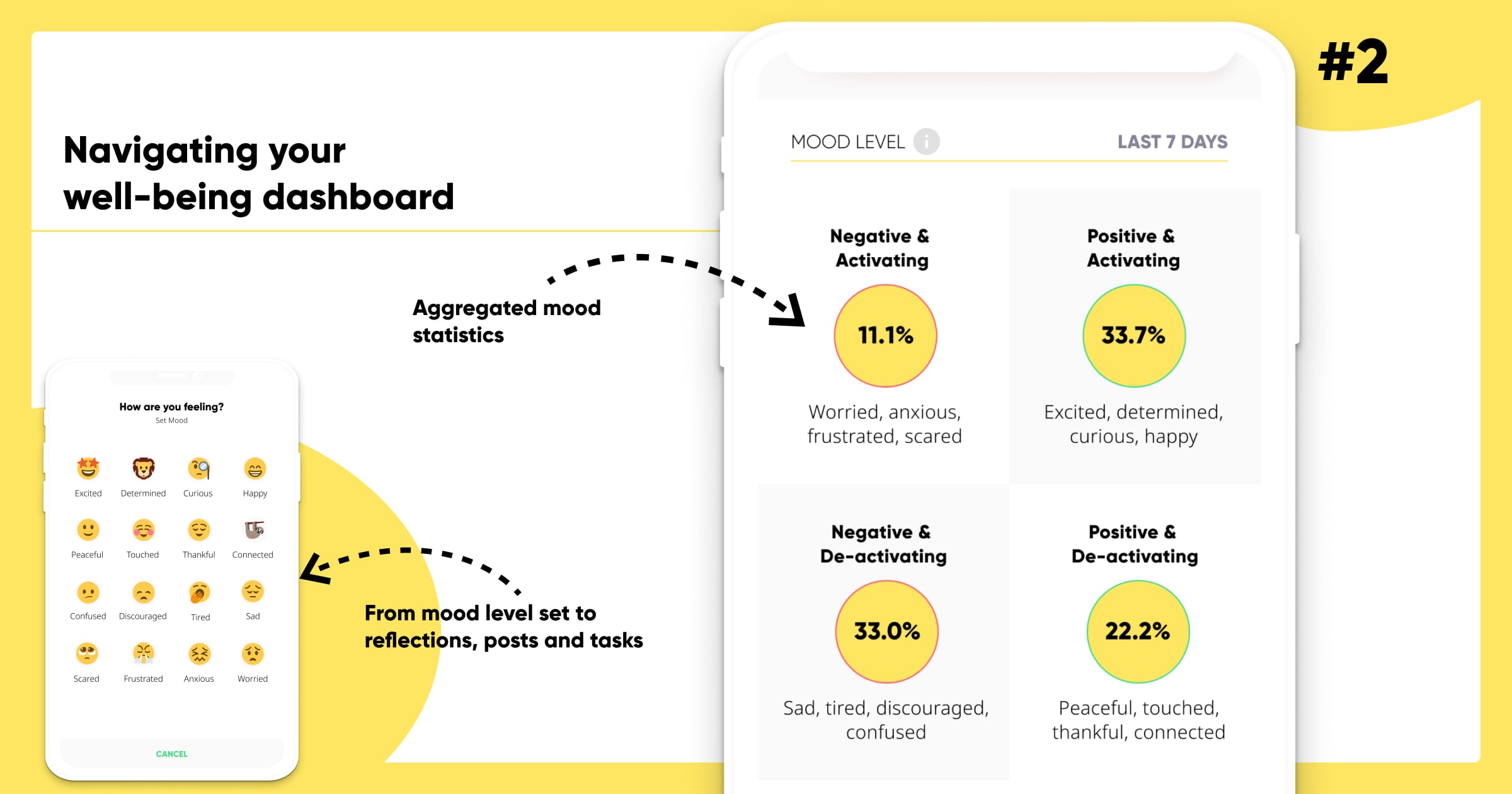Let’s talk about well-being

Ask any parent or teacher
Ask any parent or teacher around the world what they wish for their kids, most will reply “happiness”, “friends”, “health”, “satisfaction”, “confidence”. At the core, these elements are driven by consistently nurturing well-being.
Yet the current reality is that consistently nurturing each individual students’ well-being at schools is a mammoth, if not impossible task for educators. However, the need has never been more present. On average across OECD countries, about one in four students disagreed that they make friends easily at school; about one in five said they feel like an outsider at school, and about one in six feels lonely at school.
That’s where we come in!
Clanbeat’s well-being feature guides students to focus on their emotions and ultimately influence their own well-being. This is vital in education because according to Reinhard Pekrun, a researcher at UNESCO International Bureau of Education, “ emotions control the students’ attention, influence their motivation to learn, modify the choice of learning strategies, and affect their self-regulation of learning”.
With Clanbeat, teachers are able to manage and monitor their students’ moods and well-being, leveraging real-time data to make swift, personalised interventions.
We help save teachers’ time, build sustainable habits and promote better well-being.

So, how does it work?
- Students are sent either daily or weekly check-in questions designed to prompt them to think about the challenges and opportunities facing them.
- Students answer using a scale of four emojis ranging from very negative to very positive.
- Students and teachers can then track their well-being trends with the in-app dashboard
- Flags swiftly alert teachers to students who’ve reported negative answers have had a drastic change in their trends and to those students who skip answering.
- Negative answers trigger messages designed to self-soothe then encourage communication with adults if a negative trend persists.
- A teacher dashboard gathers the moods attached to any post, task or reflection and displays a class average level. Trendlines show the seven-day average trend for the class.
Tips and tricks for use in the classroom
We can help you configure check-ins to suit your school schedule and students.
Daily check-ins are made up of two questions in the morning and two in the evening.
Weekly check-ins are made up of one question at the beginning of the week and three at the end.

